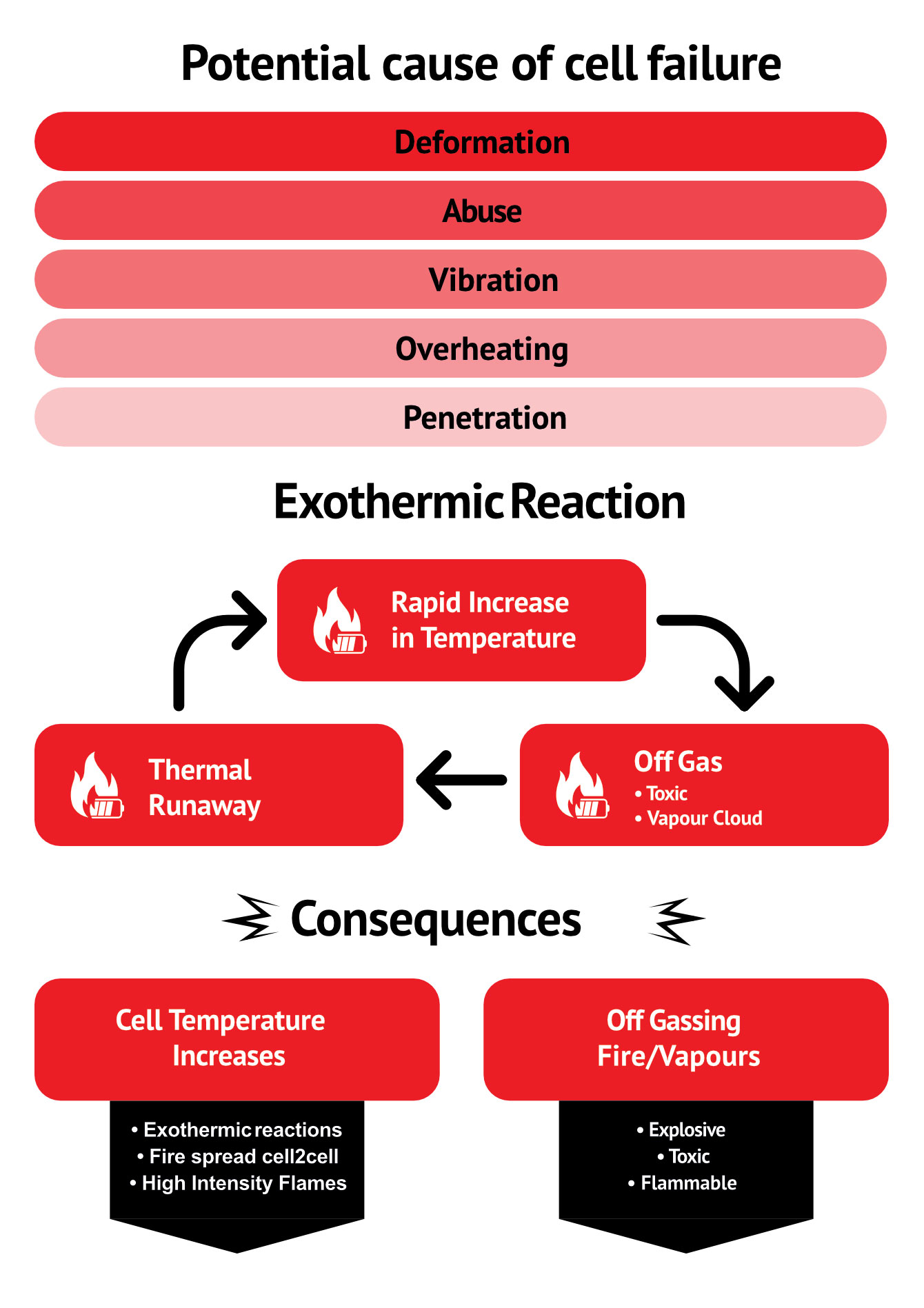Lithium Battery Fires
Lithium batteries (LBs) are a major asset to reduce the impact of climate change, and are here to stay, but they do represent a new fire problem…The FireShell range of modern textile products are specially designed to provide a thermal barrier that can cope with the heat and explosive capability of lithium battery fires.
Living with the Dangers of Lithium Batteries
Lithium batteries are an amazing technology, a vital part of a shift to a carbon neutral economy, and their many benefits far outweigh the problems with them. As an emerging technology, when a lithium battery catches fire, it gets huge media attention. Whether it’s an e-scooter, e-bike or an electric vehicle – or even just a battery power tool – the internet is full of dramatic fire footage of lithium battery fires…
The battery industry downplays the risk and point to the limited data available which shows that the frequency of such fires is low. But low frequency doesn’t change the fact that they happen, they will increase in frequency (as volume increases), and they will continue to be newsworthy. Moreover, unless we all take more responsibility for the way we dispose of lithium batteries, we will see increased waste fires causing huge environmental and societal damage.
Lithium batteries (LBs) are a major asset to reduce the impact of climate change, and are here to stay, but they do represent a new fire problem – it’s called thermal runaway. It occurs if/ when a single cell in a battery is damaged or is faulty which causes an accelerating release of heat inside a cell. Thermal stability is lost, the single cell fire quickly spreads from cell to cell, and soon cell venting, fire, and occasionally explosion occurs.
Thermal Runaway in Lithium Batteries
The first challenge is the uncertainty/randomness of LBs going into thermal runaway, which can be quite spectacular and, in a social media world, – very photogenic. But fires have always been frightening – and thermal runaway needs managing just like every other fire risk we manage. The second challenge is that the thermal runaway is exothermic, which means that it generates its own heat, and therefore they can be a very difficult fire to fully extinguish.
In addition, lithium fires always emit a complex vapour cloud of highly flammable toxic gases, including hydrogen fluoride & hydrogen chloride. These fires can have more intense and hotter flames, there is a chance of debris release, and reignition can occur hours or days after the initial failure. These unique features means that any intervention tools and techniques developed, must be based on an understanding of these unique challenges.
Will a textile fully extinguish a lithium battery fire?
It depends on the size of the battery and the extent of fire. A fire blanket isolates a fire, reduces smoke damage, minimises exposure to the highly toxic vapours emitted by a battery in thermal runaway, and significantly reduces the overall fire load. It buys time to escape to safety or seek further advice. Very little training is required.
Thermal runaway is an inconvenient phenomenon of lithium batteries, and we are confident that the quality of our fabric means it will absorb a great deal of the vapour cloud explosion of a thermal event.
However, the relative newness of the technology, the low volume of incident data, and the absence of any manufacturer data about thermal runaway, means that it is impossible to guarantee any blanket will entirely contain a thermal runaway explosion – there are just too many unknowns and variables. What can be guaranteed is that a fire blanket will help create a safe distance, a blanket absorbs most of the explosive power, and is a safer /less harmful/less disruptive/less contaminating
strategy than any other option currently available.



